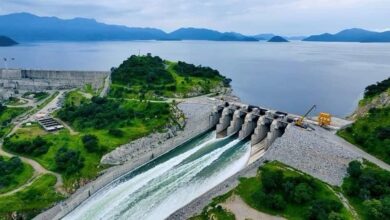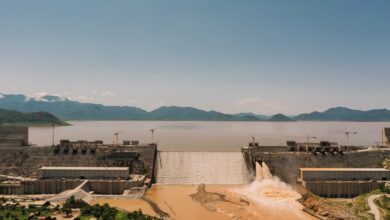
Preliminary construction of the Grand Ethiopian Renaissance Dam (GRD) began in April 2011 on the Blue Nile River near the Sudanese border. Scheduled for completion in 2014, it is planned to be the biggest hydropower dam in Africa, with more than twice the generating capacity of the Aswan High Dam. But long before the completion date, the project is already generating significant concern amongst the nine other countries that share the Nile, especially Egypt.
Over the past century many treaties have been signed in an attempt to assure each riparian country a right to Nile water, with Egypt generally receiving the lion’s share. But sub-Saharan African counties have long argued that the old treaties deny their modern right to livelihood, and after a decade of political to-and-fro between these countries and Egypt, the GRD is now underway.
Most recently, the Egyptian government protested that no quantitative studies have been conducted with regard to the dam’s effects, a complaint that resulted in a trilateral ministerial meeting being held in November between Ethiopia, Egypt and Sudan. During this meeting, it was announced that an independent technical committee of experts from each country would be formed in six months time to produce such a study.
But at the same meeting, Alemayehu Tegenu, the Ethiopian minister of water and energy, declared that regardless of the study’s outcome, the construction of the dam will continue unabated due to high confidence that the GRD will ultimately benefit all parties.
Adel Darwish, a British journalist and historian who co-wrote the 1994 book “Water Wars: Coming Conflicts in the Middle East,” told Egypt Independent that Egypt never should have ruled out the option of military intervention, because the stakes are so high for the country’s livelihood.
While Egypt Waits
Various experts have recently shared with Egypt Independent their own input on the potential pros and cons of the GRD.
Sherine al-Baradei, an AUC professor in the department of construction and architectural engineering with a focus on hydraulics, points out a number of major issues with the dam.
“Obviously, dams provide both good and bad effects,” she says. “But with Egypt being so dependent on the Nile, serious agreements must be made to ensure that the bad effects are minimized, and in advance.”
According to Baradei, hydropower dams create immense turbulence in the water, where chemical reactions such as dissolved oxygen can destroy fauna and flora. While the water will return to its normal state before reaching Egypt, the damage to these populations will be permanent. In addition, many nutrients and silt, which are essential for agriculture, will be retained in the large dam.
“When the Aswan High Dam was built, farmers, fisheries and many others were seriously affected for decades by the lowering of nutrients, silt, flora and fauna in the water,” she says.
Baradei explains that these levels will certainly drop further with the GRD, not to mention many other unforeseen problems that will likely occur.
Perhaps the most significant concern is that Egypt may no longer receive its appropriate share of water. But according to Baradei, issues of water regulation can be solved through negotiations with Ethiopia, whereas there is no solution for the loss of flora and fauna.
The Nile Basin Core Group (NBCG), a team of Nile specialists, has a more positive analysis of the situation. In their view, the GRD is an opportunity to create strong ties between Egypt and sub-Saharan countries, and there may also be many positive effects of the dam.
“The right question is not what the effects of the GRD will be, but how the Nile basin’s water can be used to integrate all riparian countries in a stable and efficient way,” says Mohamed al-Mongy, an environmental development specialist from the NBCG. “Instead of looking North, East and West for our solutions, we need to begin looking South, where the source of our livelihood lies.”
One of Mongy’s colleagues at NBCG, Haytham Awad, a hydrologist from the University of Alexandria, has conducted research that indicates the GRD may actually increase water flow to Egypt.
Awad’s research shows that during the flood season in late August and early September, the majority of Egypt’s water arrives in Lake Nasser, where it is stored for approximately ten months until peak agriculture season in July the following year. During this period, approximately twelve percent of the stored water evaporates.
However, with the water being stored in the GRD, where there will be less evaporation and that will help conserve water.
Another finding is that the GRD is expected to produce power surpluses which, assuming cooperation, could be exported to Egypt, leading to strengthened ties between the two countries.
“Collaboration is key,” says Lama El Hatow, a member of the NBCG doing her PhD research on water governance of the Nile basin. “When we negotiate with the riparian states, it is vital that we understand all the facts and science holistically.
“Good science should lead to the right political negotiations, as opposed to jumping to haphazard conclusions based on partial understandings that may lead to Egypt’s own detriment,” she concludes.


